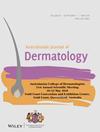A Retrospective Observational Study of the Incidence and Associated Risk Factors of Skin Cancers in Renal Transplant Recipients in Canterbury, New Zealand
Abstract
Background
Skin cancer is a significant complication amongst renal transplant recipients, associated with substantial morbidity and mortality.
Aim
This retrospective observational study aimed to assess the incidence and identify associated risk factors for skin cancers amongst renal transplant recipients in Canterbury, New Zealand.
Methods
We retrospectively reviewed data from 177 renal transplant recipients who underwent transplantation between January 2004 and December 2015.
Results
Amongst the patients, 32% developed skin cancers. The mean age of the study cohort is 57 years with a mean age at transplant of 47 years. A total of 315 histologically proven invasive skin cancers were recorded, with a squamous cell carcinoma (SCC) to basal cell carcinoma (BCC) ratio of 1.25:1. Forty-four patients had died by the study's conclusion, with metastatic skin cancer accounting for four deaths (9%). Non-melanoma skin cancers (NMSC) showed significant associations with older age and older age at transplant (p < 0.001). Male gender, skin phototype I-III, and ciclosporin exposure were also associated with increased NMSC risk (p < 0.05). The cumulative 10-year risk for NMSC amongst renal transplant recipients was estimated at 28.85% (95% CI = 28.77–28.91).
Conclusion
This study confirms a high incidence of skin cancers amongst renal transplant recipients in Canterbury, New Zealand, consistent with international findings. Understanding the risk factors for skin cancer can aid in developing targeted strategies for prevention and management in transplant recipients.

 求助内容:
求助内容: 应助结果提醒方式:
应助结果提醒方式:


